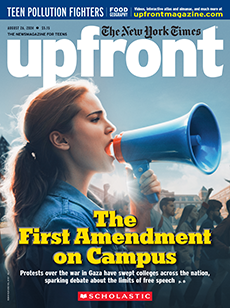1. Set Focus
Pose these essential questions to guide discussion: What makes an activity a “sport”? Why would that designation matter?
2. List Vocabulary
Share with students some of the challenging vocabulary words in this article (see below). Encourage them to use context to infer meanings as they read.
- chronic (p. 9)
- morale (p. 9)
- designation (p. 10)
- outlier (p. 10)
- scholastic (p. 10)
- investment (p. 11)
3. Engage
Ask students to share what comes to mind when they think about cheerleading and STUNT. Revisit this discussion after the lesson, having students share any new insights they’ve gained.
